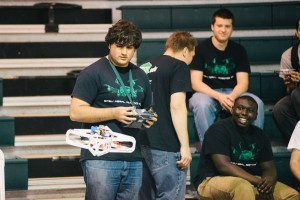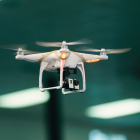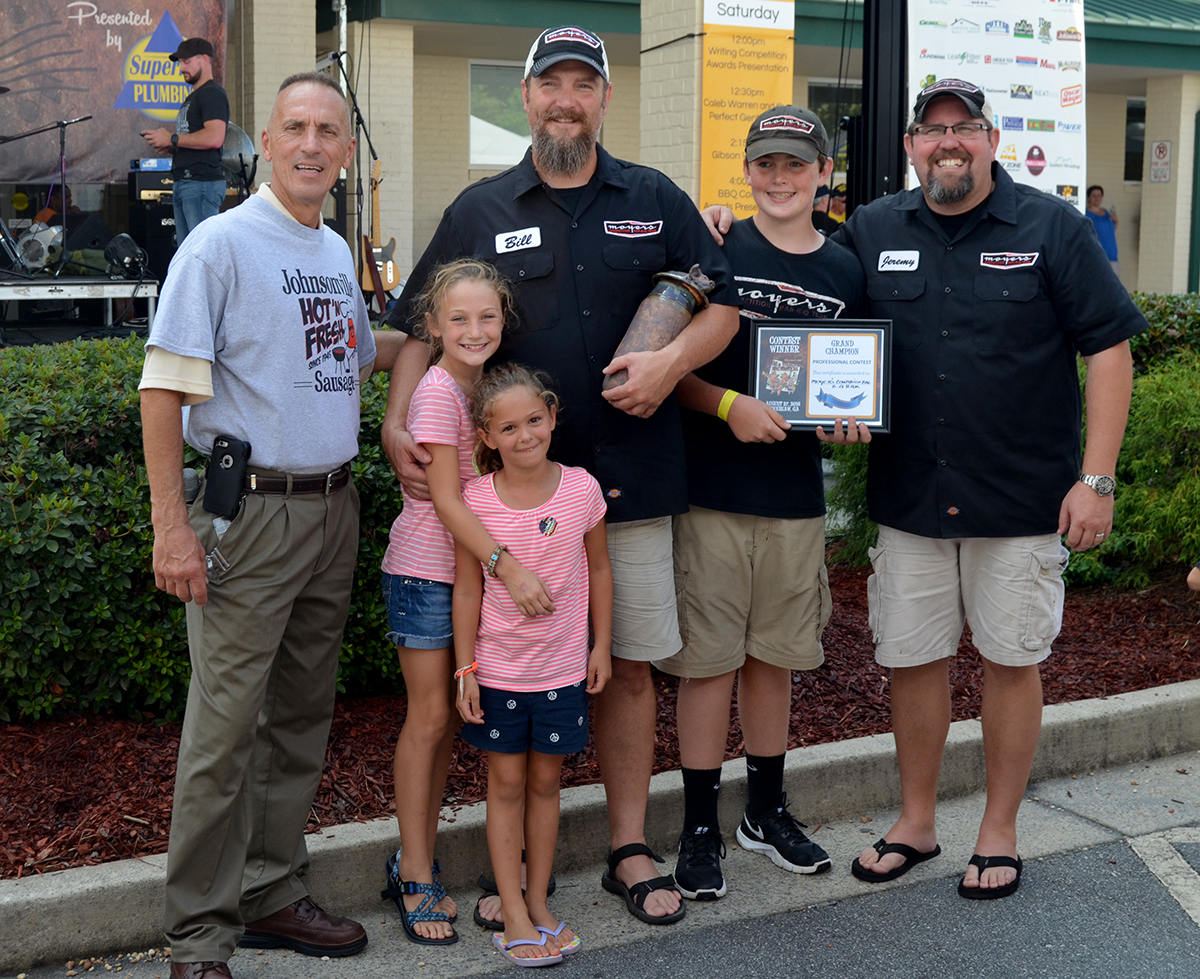
Sierra Hubbard, News Editor
The Aerial Robotics Team held its third annual Aerial Olympics at the Marietta Campus on March 26 and featured competitive events in five categories between remote controlled flying vehicles.
The Aerial Olympics is a friendly in-house competition that also serves as practice for the International Aerial Robotics Competition, or IARC, that takes place every year at two venues: one is in China, and the other is at Georgia Technical Institute.
“It’s been going on for 23 years, [and] the SPSU aerial robotics team has been part of it for 20 years,” said David Haffner, president of the KSU Aerial Robotics Team. Haffner is a senior majoring in Mechanical Engineering and Technology.
“We develop autonomous multi-rotor aircraft, and we do some planes and helicopters as well, but the end-game is just autonomous flying vehicles,” he said.
The Olympics consisted of five events, beginning with the pylon run, a timed run of two laps around two pylons. Then participants must do the spot landing, which entails flying across the arena and returning to land in a specific area, which is timed and based on accuracy.
In the third event, pilots must drive their vehicle through two vertical figure-eights in the ladder run. The obstacle course is next and offers participants an allotted amount of time to accumulate as many points as possible by passing through objects of varying difficulties. Vehicles could fly under a table, weave through the rungs of the ladder, or pass through ‘the window’, a square-shaped opening that was set to spin around at random intervals.
“The idea is to warm the pilot up to the most challenging events, which is the obstacle course,” Haffner said, “and then the most challenging would be the ribbon combat.”
In the last event, long paper ribbons were attached to the bottom of each vehicle, and the object was to tear off the ribbons of every other aircraft.
“It’s like dog-fighting, pretty much, with multi-rotors,” he said.
Awards were given out at the end of the Olympics with a first, second, and third place certificate in each of the five events.
“It’s a bit of a challenge, at first, especially with a lot of people flying,” said Haris Jafri, winner of the ribbon combat. Jafri is a senior also majoring in Mechanical Engineering and Technology.
“Every year we plan this event,” he said. “It’s open to all students on both campuses, now, so any major, anybody can come in as long as they have a little RC quadcopter [or] helicopter.
“It’s a fun experience; you can kind of test your skills against somebody else and like, ‘Okay, how do they fly?’ Kind of see some new types of quadcopters out there.”
The KSU Aerial Robotics Team is comprised of three departments that divide up the labor for the IARC: control systems, structure department, and electronics.
“I am the head of the structures division currently,” Jafri said.
He believes people should join the team if even just for the wealth of experience they can gain from the program.
“They learn how to 3-D model, how to build, how to fly, how to program, a lot of different things,” he said. “A lot of what you learn on the team you can apply to your classes but also in the real world and you can get a lot of job experience.”
Preparing for the IARC is a year-round process, and the team builds their models from scratch.
“Every year we design a brand new vehicle to compete in the IARC,” Haffner said. “We design it from the ground-up. We spend a semester in designing with virtual space and then we do a semester of hands-on fabrication.”
Though most of the vehicle is their own creation, he admits that they do not make every single aspect of it.
“There are some components we don’t worry about, like the motors, propellers, we don’t really worry about that, but the frame and the majority of the software we develop ourselves.”
Eliemanuel Roman, a senior majoring in Electrical Engineering, has been the secretary for the school’s Aerial Robotics Team for the past three years. He handles all communication within the team, the treasury, and organization of events and meetings. He was a judge during the Olympics and claims he enjoyed the evening as always.
“This organization invites anyone to join, regardless of major,” Roman said, “and I hope to see anybody from Kennesaw come down here and have some fun with us.”
As part of the integration into Kennesaw State University, the members of the team are creating a KSU flying mascot and have completed the ‘head’ of the vehicle, an owl face made with a 3D printer and hand-painted by the president.
The team will compete in the IARC on August 13, 2015 at Georgia Tech against over a dozen teams from all over the United States as well as from universities as far as the United Arab Emirates.


